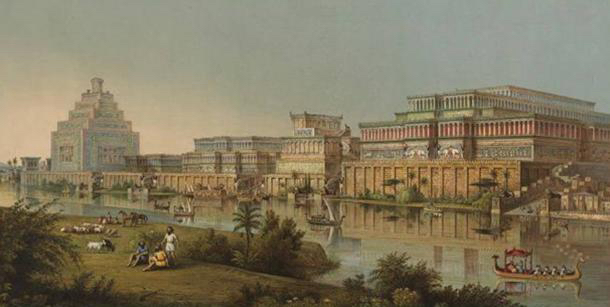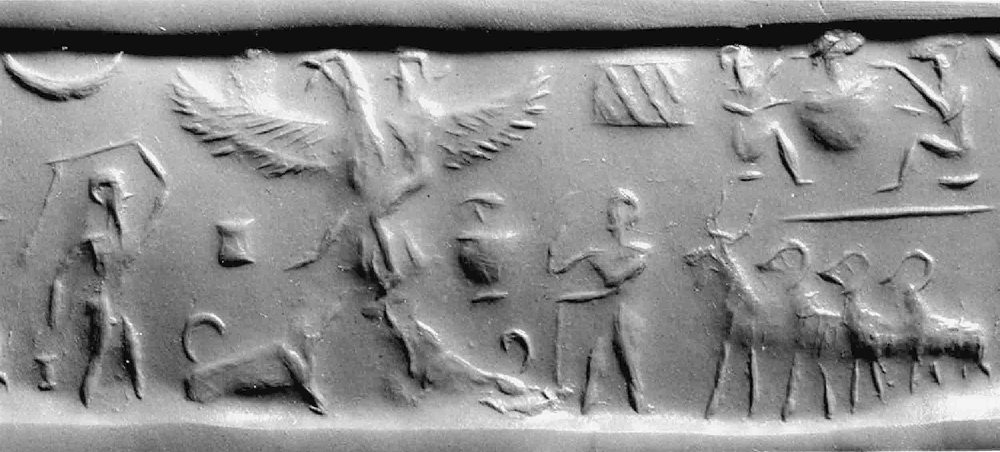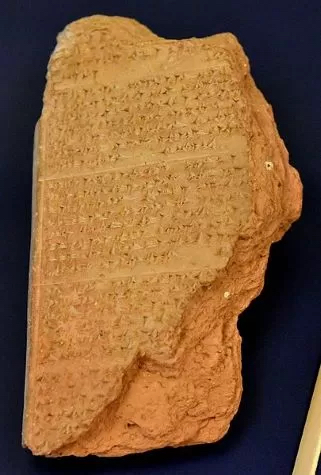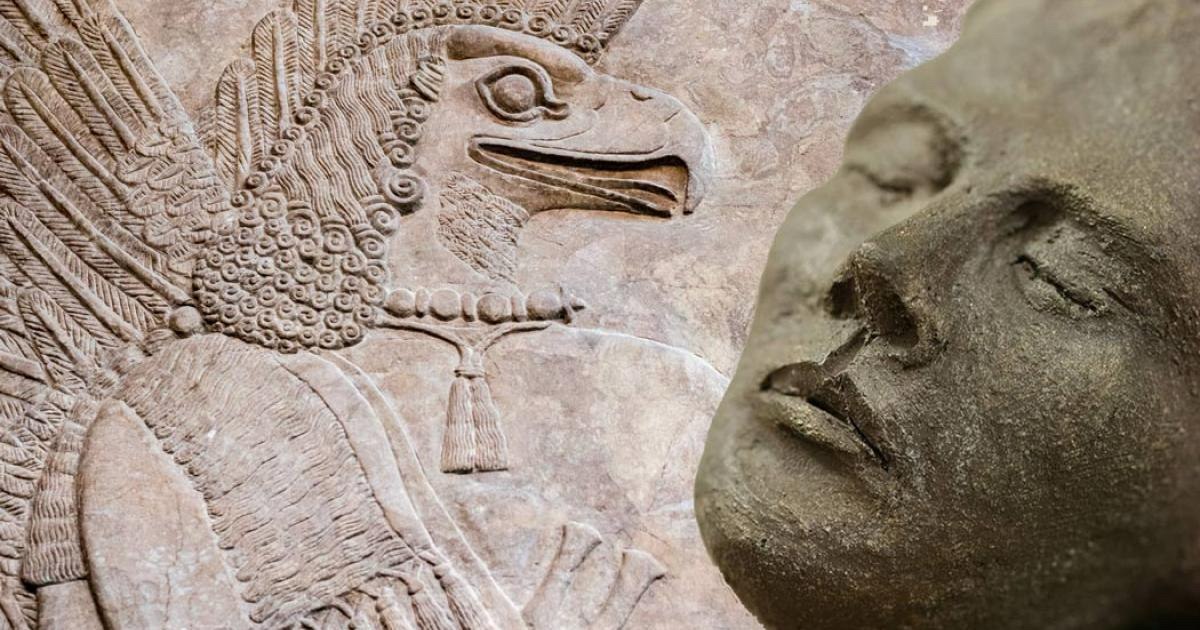Dreams have fascinated humankind since the dawn of civilisation. Long before Freud and Jung began analysing the subconscious, ancient societies were already decoding dreams, treating them as messages from gods, omens of the future, or reflections of a person’s inner state. Among the earliest and most sophisticated dream interpreters were the Mesopotamians—people who lived between the Tigris and Euphrates rivers in what is now Iraq, over 4,000 years ago.
One of their most enduring legacies is oneiromancy, the practice of divination through dreams. Mesopotamian scribes even compiled dream dictionaries—written guides that linked dream imagery with specific meanings. These texts represent some of the oldest attempts to systematically interpret the language of the unconscious.
In this article, we’ll explore how Mesopotamians viewed dreams, what their dream dictionaries contained, and why their approach still resonates with us today.

To Mesopotamians, dreams weren’t just random mental activity. They were thought to be direct communications from the gods or from spirits of the dead. A dream could serve as a warning, a blessing, or a glimpse of the future.
The Mesopotamian worldview was deeply religious and intertwined with astrology, divination, and omens. Just as priests read patterns in the stars, the liver of a sacrificed animal, or the flight of birds, they also analysed dreams to reveal hidden truths.
There was even a hierarchy of dreams. Some were considered “message dreams”—clear instructions or warnings from the gods—while others were seen as more symbolic, requiring skilled interpretation.

One of the most remarkable finds in Mesopotamian archaeology is a collection of clay tablets containing dream interpretations. These texts, often written in Akkadian and Sumerian cuneiform, date back to the second millennium BCE.
One of the most famous examples is the “Iškar Zaqīqu” (literally “Excerpts about Dreams”), a kind of dream handbook.

It contained hundreds of entries, each beginning with a phrase like:
“If a man dreams that…”
The dream description would be followed by a specific prediction or outcome. For instance:
“If a man dreams that he eats lion flesh, he will have great power.” “If a man dreams that his teeth fall out, his household will diminish.” “If a man dreams that he drinks wine, joy will come to him.”
These interpretations were often formulaic, but they provided a guide for priests and scribes to use when advising kings or common citizens.
Dreams were not just part of everyday life but also featured prominently in Mesopotamian literature. Epic tales often used dreams as turning points in the story.
In the Epic of Gilgamesh, one of the world’s oldest surviving works of literature, dreams appear as prophetic visions. For example, Gilgamesh dreams of a meteor and an axe—symbols that his mother interprets as the arrival of his destined companion, Enkidu. Later, Enkidu himself dreams of the underworld, foreshadowing his death.
These stories reflect how deeply dreams were woven into the cultural fabric of Mesopotamian thought. They weren’t simply personal experiences but collective symbols that shaped myth, politics, and religion.
The Mesopotamians lived in a world of uncertainty: unpredictable floods, wars between city-states, and the constant fear of angering the gods. In such an environment, any tool that offered insight into the future or guidance from the divine was invaluable.
Dream dictionaries provided a sense of structure to the chaotic world of dreams. By categorising and interpreting dream imagery, scribes created a framework that made the unknowable feel more predictable.
It also gave rulers a powerful tool. Kings often relied on dream interpreters before making major decisions—whether to go to war, sign a treaty, or launch a new building project. A favourable dream could be seen as divine approval, while a troubling one might signal danger.
While Mesopotamians viewed dreams through a spiritual lens, modern psychology can offer another perspective on why dream dictionaries resonated with people.
Dreams often reflect anxieties, desires, or unresolved conflicts. A Mesopotamian farmer who dreamed of teeth falling out might have associated it with loss or illness in the family. A warrior who dreamed of eating lion flesh could feel empowered and courageous. Even if the explanations were framed as divine messages, they often tapped into very human emotions.
In this sense, Mesopotamian dream dictionaries may have been an early attempt at what we now call pattern recognition—finding meaning in recurring dream themes and connecting them to real-life events.
If you’ve ever looked up a dream online—say, what it means to dream about flying or losing your phone—you’ve followed a tradition that dates back thousands of years to Mesopotamian oneiromancy.
Just like today’s dream interpretation websites and books, the Mesopotamian dream dictionaries offered symbolic meanings tied to universal human experiences: life, death, love, power, and fear.
Of course, modern dream analysis often draws from psychology rather than divine prophecy. Freud saw dreams as expressions of repressed desires, while Jung believed they revealed archetypes from the collective unconscious. Yet the urge to decode dreams—to assign them meaning—is strikingly similar.
So why should we care about Mesopotamian dream dictionaries today?
First, they remind us that humans have always sought meaning in dreams. Whether we believe they are random neural firings, subconscious messages, or even glimpses of something spiritual, dreams continue to fascinate us because they blur the line between reality and imagination.
Second, Mesopotamian oneiromancy shows how deeply culture shapes dream interpretation. The same dream—say, of flying—might be seen by one culture as freedom and by another as arrogance. By studying ancient approaches, we gain insight into how meaning is constructed.
Finally, these ancient texts highlight the continuity of human curiosity. When you wake up from a vivid dream and wonder, “What does it mean?”, you’re participating in a tradition as old as civilisation itself.
Mesopotamian oneiromancy offers us a fascinating window into the earliest attempts at dream interpretation. Their clay tablet dream dictionaries may seem archaic, but they were groundbreaking in organising dream imagery into a system of meaning.
From the dream-inspired epics of Gilgamesh to the predictive entries of the Iškar Zaqīqu, dreams were central to Mesopotamian culture, shaping decisions in both daily life and royal courts.
And while we may no longer believe that eating lion flesh in a dream grants real-world power, we still share the same impulse: to decode our nighttime visions and uncover what they might reveal about our lives, our fears, and our future.
WATCH:
Disclaimer: The interpretations shared in this article are intended for informational and entertainment purposes only. Dreams are deeply personal and can be influenced by individual experiences, emotions, and cultural background. While we aim to provide thoughtful insights, the meanings may not apply to everyone. If your dreams are causing ongoing distress or affecting your well-being, consider speaking with a qualified professional for further guidance.
